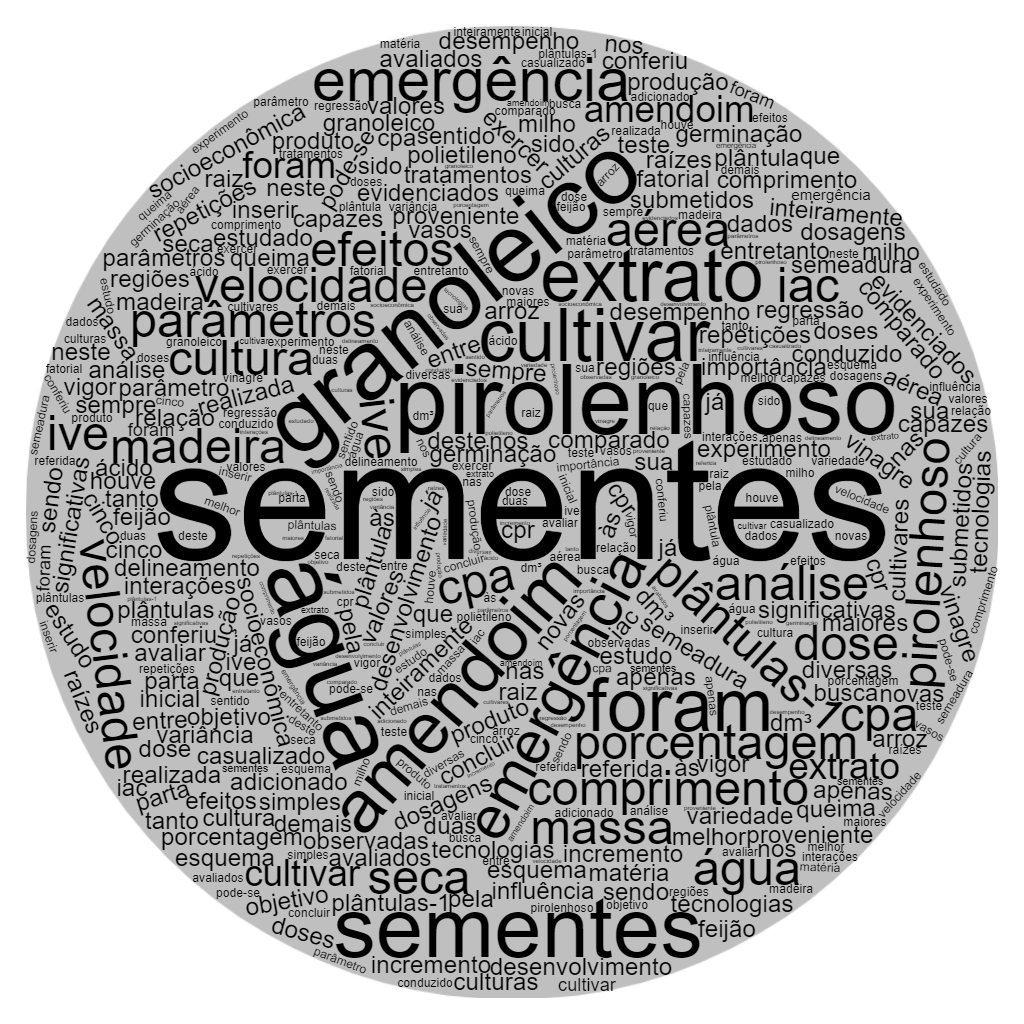Emergence and initial development of peanut seedlings subjected to the use of pyroligneous extract
DOI:
https://doi.org/10.52755/sas.v2iedesp1.128Keywords:
Arachis hypogaea L., Germination, Vigor, Wood vinegarAbstract
The pyroligneous extract (PE), a product from wood burning, known as pyroligneous acid or wood vinegar, has been studied in several cultures such as corn, beans, rice, capable of exerting effects on germination and seed vigor. Peanut farming is of socioeconomic importance in the regions where it is produced and always seeks to introduce new technologies. In this sense, the aim of this study was to evaluate the influence of the pyroligneous extract on the emergence and initial development of peanut seedlings. The experiment was carried out in a completely randomized design, in a 2x5 factorial scheme, with two peanut cultivars: IAC 503 and Granoleico; and five doses of EP: T1- 10.0 mL of deionized water kg-1 of seeds; T2- 2.5 mL EP + 7.5 mL deionized water kg-1 seeds; T3- 5.0 mL EP + 5.0 mL deionized water kg-1 seeds; T4- 7.5 mL EP + 2.5 mL deionized water kg-1 of seeds and; T5- 10.0 mL EP kg-1 of seeds, with 4 repetitions. Sowing was carried out in 11 dm³ polyethylene pots, and the parameters of emergence percentage (E%), emergence velocity index (EVI), aerial part length (APL), root length (RL) and mass were evaluated. seedling dry matter (DM). Data were subjected to analysis of variance by the F test (p>0.05) and treatments by regression analysis. No significant interactions were observed between the simple effects, however, for the Granoleico variety, when EP at a dose of 5 mL Kg-1 seeds was added, there was an increase in the percentage of emergence, emergence speed index and seedling dry mass-1. As for the length of both shoots and roots (cm seedlings-1), higher values were found for 7.5 mL of EP Kg-1, also for the Granoleico cultivar. It can be concluded that pyroligneous extract at a dose of 5 mL Kg-1 provided better performance for cultivar Granoleico in the parameters of E%, EVI and APL, while for the cultivar IAC 503 only for the parameter of E%, when compared to the other dosages for that culture.
Downloads

Downloads
Published
How to Cite
Issue
Section
License
Copyright (c) 2021 César Martoreli da Silveira, Gabriel Vinícius Lima de Souza, José Eduardo Fadim Junior, Carlos Roberto De Toffoli

This work is licensed under a Creative Commons Attribution-NonCommercial-ShareAlike 4.0 International License.
Autores concordam com os seguintes termos:
a) Os autores mantêm os direitos autorais e concedem à revista o direito de primeira publicação, com o trabalho simultaneamente licenciado sob a LicençaAttribution-NonCommercial-ShareAlike 4.0 International, que permite o compartilhamento do trabalho com reconhecimento da autoria e publicação inicial na Revista SAS. A licença permite o uso, a distribuição e a reprodução irrestrita, em qualquer meio, desde que devidamente citada a fonte. Essa licença permite também que outros remixem, adaptem e criem a partir do seu trabalho para fins não comerciais, desde que atribuam a você o devido crédito e que licenciem as novas criações sob termos idênticos.
b) Não cabe aos autores compensação financeira a qualquer título, por artigos ou resenhas publicados na South American Sciences.
c) Os conceitos expressos nos artigos publicados na South American Sciences são de inteira responsabilidade de seus autores.








